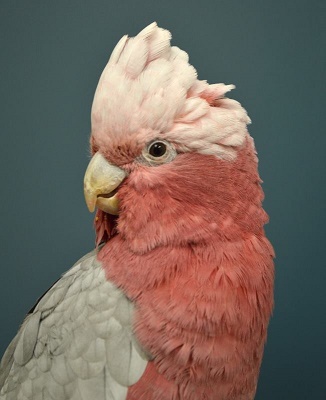
There is no denying that March has been a challenging month for all of us due to the COVID-19 pandemic. So many of us are now self-isolating at home and are looking for things to do to keep our minds occupied. As such, we hope that you spent some time with us on Twitter @ExoticPetVets and that you enjoyed our Animal of the Month feature on the galah cockatoo. If you missed any of our tweets on these distinctive birds, here is a summary that you can reference at any time. Did you know?:
- In the wild, galah cockatoos (Eolophus roseicapilla) are found in Australia. They are found in almost every part of the country, with the exception of the most northern part of the Cape York Peninsula and in the country’s driest areas.
- The scientific classification of the galah cockatoo is rooted in an interesting evolutionary history.
- Initially, the galah cockatoo’s scientific name was Cacatua roseicapilla because of the similarities between the galah and white cockatoos.
- Subsequent genetic research revealed that the ancestors of galah cockatoos, cockatiels and Major Mitchell’s cockatoos broke away from the white cockatoo lineage at some point. So galah cockatoos were then reclassified as Eolophus roseicapilla.
- Because of their distinctive colouring, Galah cockatoos are also commonly known as the rose-breasted cockatoo, the pink-and-grey cockatoo, red-breasted cockatoo and roseate cockatoo.
- The “galah” part of the galah cockatoo’s name is derived from the word “gilaa,” which means clown or fool in one of Australia’s indigenous languages.
- The word “galah” is also a slang term in Australia meaning “loud-mouthed idiot.” When it comes to galah cockatoos, that is only half right – galah cockatoos are not fools (they are very intelligent!), but they certainly are loud.
- There was a Friday the 13th this March and while there are no widely-known superstitions about galah cockatoos, there is some symbolism with which they are associated.
- According to the website nativesymbols.info, the galah cockatoo “can sometimes mean learning without understanding, or understanding without integrating this increased awareness into one’s actions.”
- Citing A.W. Reed’s book “Aboriginal Myths, Legends & Fables,” nativesymbols.info notes the galah cockatoo’s pink breast represents blood lost in battle and the memory of both bravery and pain.
- Galah cockatoos are medium-sized birds and fully-grown adults typically measure about 35 cms (14 inches) in length.
- Galah cockatoos have distinctive pink and grey plumage. As previously mentioned, they are deep pink on their chests along with their head and necks. Their crowns and crests are pale pink while their backs, wings and undertails are grey.
- If you look closely, you can tell the difference between adult female and male galah cockatoos – and the eyes have it! Females have pink eyes and males have dark brown eyes.
- The crest of pale pink feathers that sits atop the galah cockatoo’s head is a communication tool that she can raise or lower at will.
- Galah cockatoos have what is called a recumbent crest. That means when the crest is in its fully lowered position, the feathers lie flat and it’s barely noticeable.
- Galah cockatoos will raise their crests for a variety of different reasons; including, but not limited to, excitement, fright, surprise or curiosity.
- Galah cockatoos may also raise their crests as a defense mechanism to make them appear suddenly larger when defending their territory or flocks.
- When the crest is in the lowered position, it can mean the galah cockatoo is calm and friendly.
- Galah cockatoos are very social birds and in the wild can be seen in enormous noisy flocks that can consist of as many as 1,000 birds.
- Galah cockatoos are also known to include other bird species in their flocks including sulfur-crested cockatoos.
- Galah cockatoos form permanent life-long pair bonds with each other. If their partner dies, they will form a bond with another partner.
- Galah cockatoos are also known to breed with other cockatoo species – both in the wild and in captivity.
- A galah cockatoo’s diet in the wild is made up mostly of a variety of seeds from grass, trees and shrubs.
- As a result of their seed-heavy diet in the wild, galah cockatoos play a very important role in dispersing seeds, which germinate and grow into new vegetation.
- But galah cockatoos don’t only eat seeds. They have a varied diet that also includes shallow plant roots, insects and their larvae, and fruits.
- Galah cockatoos also eat agricultural crops so they are considered by many to be a pest in Australia.
- During this time where many people are self-isolating or are in quarantine, a galah cockatoo also found himself in quarantine two years ago after stowing away on a cruise ship. ab.co/2UMrpYP

